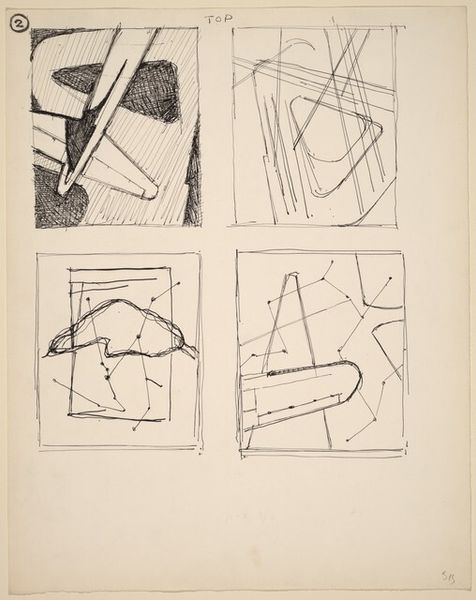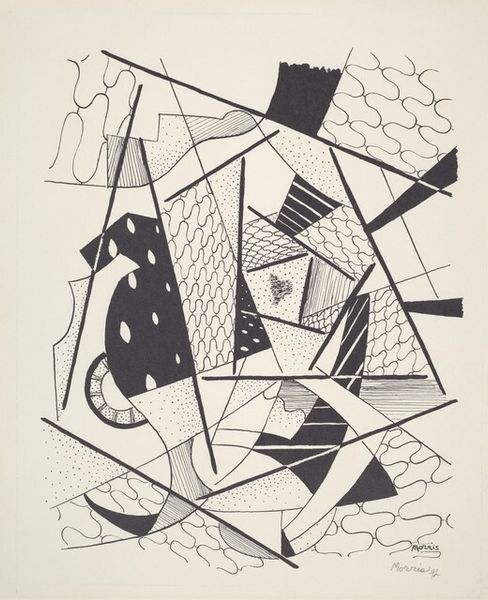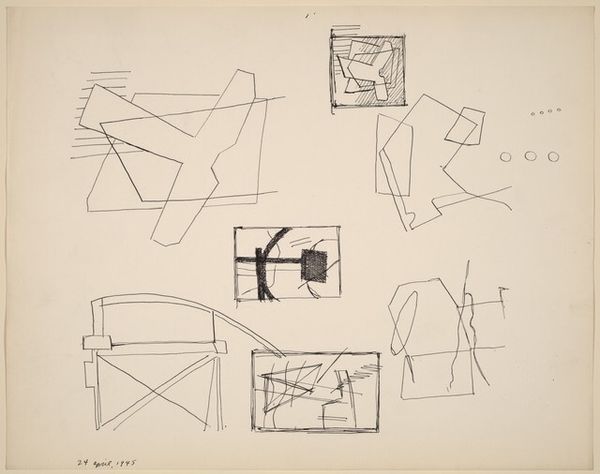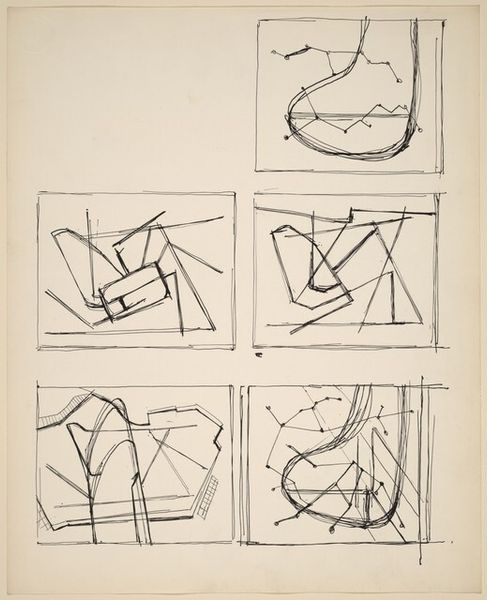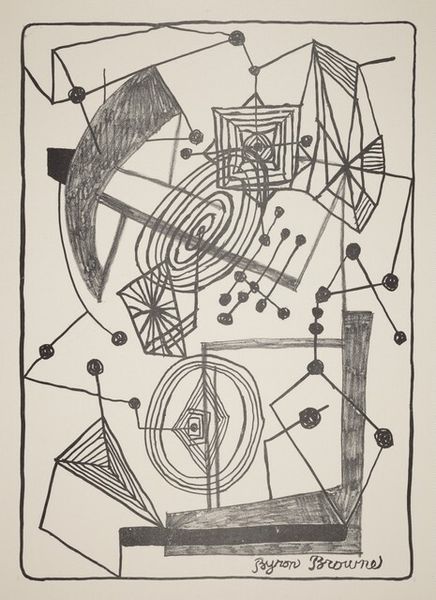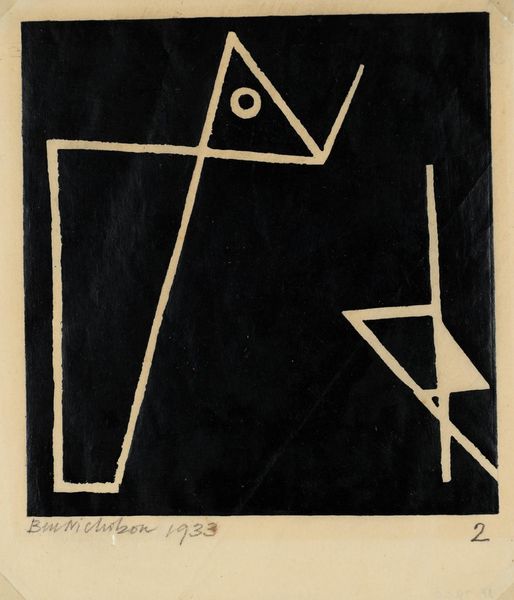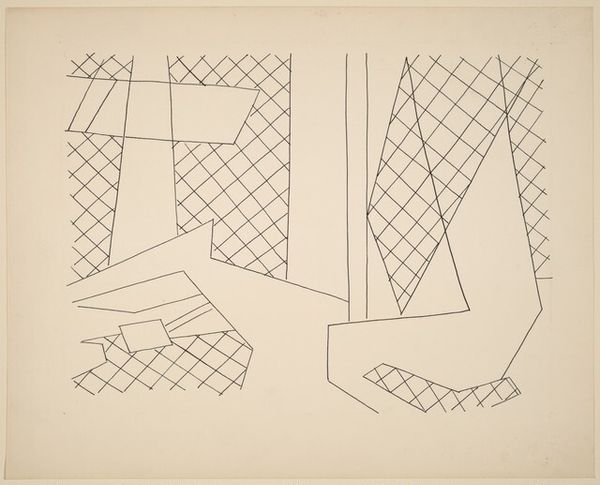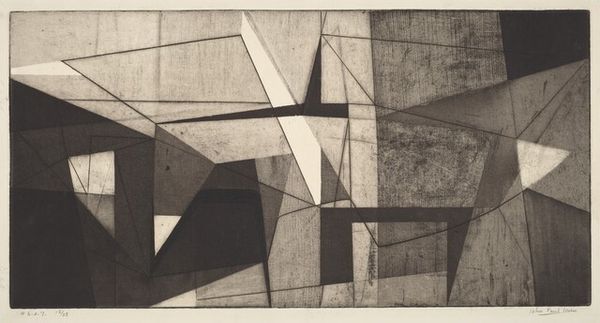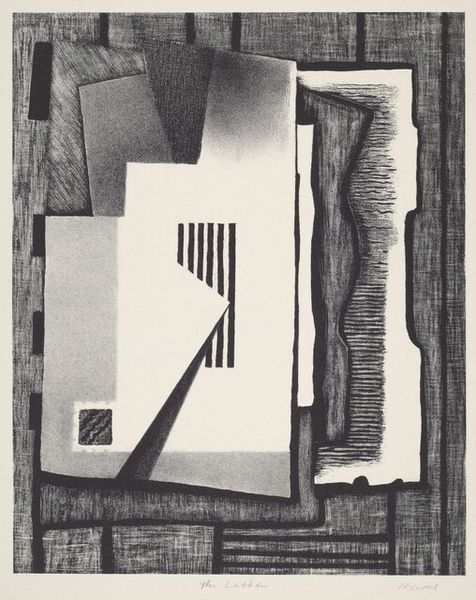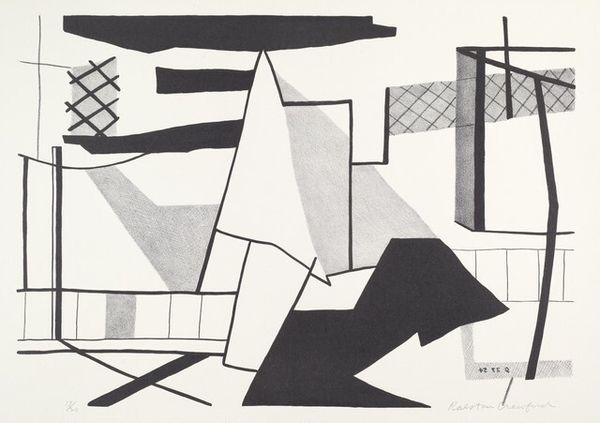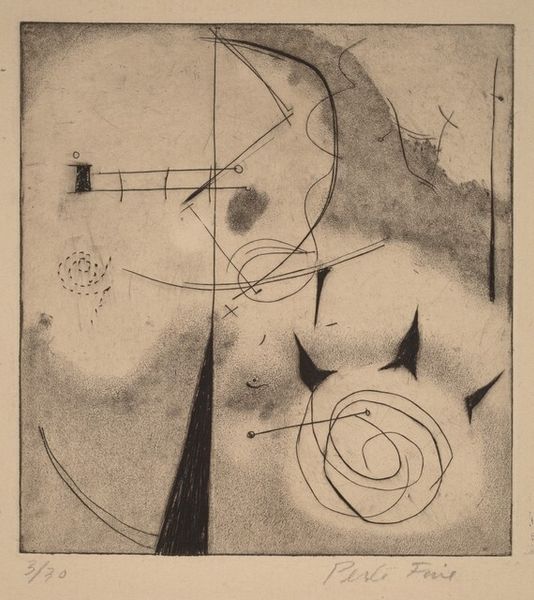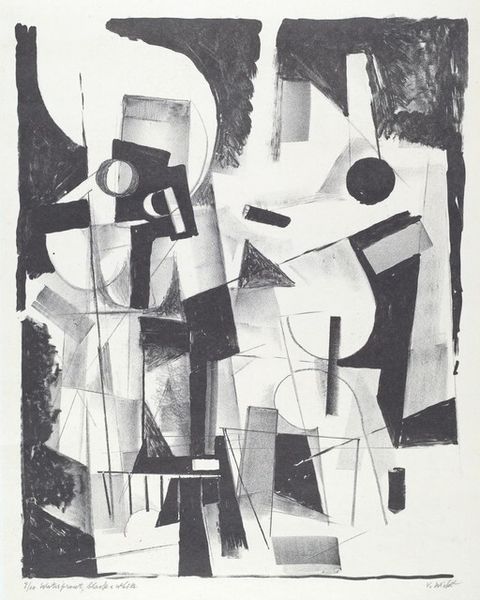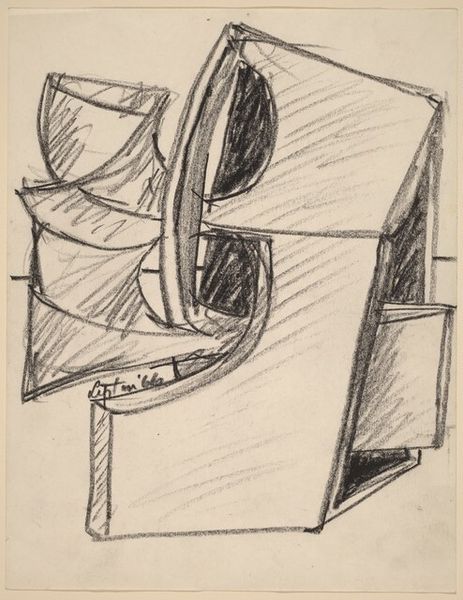
drawing, graphite, pen
#
drawing
#
pen sketch
#
form
#
geometric
#
abstraction
#
line
#
pen work
#
graphite
#
pen
#
modernism
Dimensions: overall: 37.2 x 29.5 cm (14 5/8 x 11 5/8 in.)
Copyright: National Gallery of Art: CC0 1.0
Editor: This is an untitled pen and graphite drawing by Ralston Crawford, from around the 1940s. There’s a curious sense of detachment to it, almost like architectural blueprints stripped bare of any actual building. What do you see in this piece? Curator: I see a visual exploration deeply embedded in the socio-political context of its time. Crawford's geometric abstractions resonate with the Machine Age aesthetic, yet there's an underlying commentary on the dehumanizing aspects of industrialization. Consider the stark lines and fractured forms – could they be interpreted as a reflection of the societal fragmentation experienced during and after the Second World War? What emotional register does the starkness provoke in you? Editor: That’s a really interesting perspective. I hadn’t thought about it as a commentary on societal fragmentation. To me, it felt more like a formal exercise in pure abstraction. Curator: But can form ever truly be separated from its content? During the 1940s, abstraction wasn't just about aesthetics; it was a conscious decision by artists to move away from representational art, often as a form of resistance against oppressive regimes and dominant ideologies. These artists asked viewers to create their own subjective responses beyond propaganda. Do you think the repetition of shapes suggests any underlying theme? Editor: The repetition makes me think about mass production, definitely. Maybe a commentary on uniformity versus individuality? Curator: Precisely! The dialogue between uniformity and individuality becomes all the more critical when considering the power structures at play during that era. Viewing this work through that lens, what new layers of meaning do you uncover? Editor: Now, I’m seeing how the geometric shapes, almost cold and detached, echo the impersonal nature of industrial processes. It gives the work a newfound depth. Curator: Indeed. It serves as a potent reminder that art is not created in a vacuum. Understanding the historical and cultural forces that shaped an artwork can help us gain a deeper appreciation. Editor: Absolutely. It's changed my understanding. I realize that "Untitled" isn’t just about form; it’s a response, maybe even a resistance, to the world around it.
Comments
No comments
Be the first to comment and join the conversation on the ultimate creative platform.
